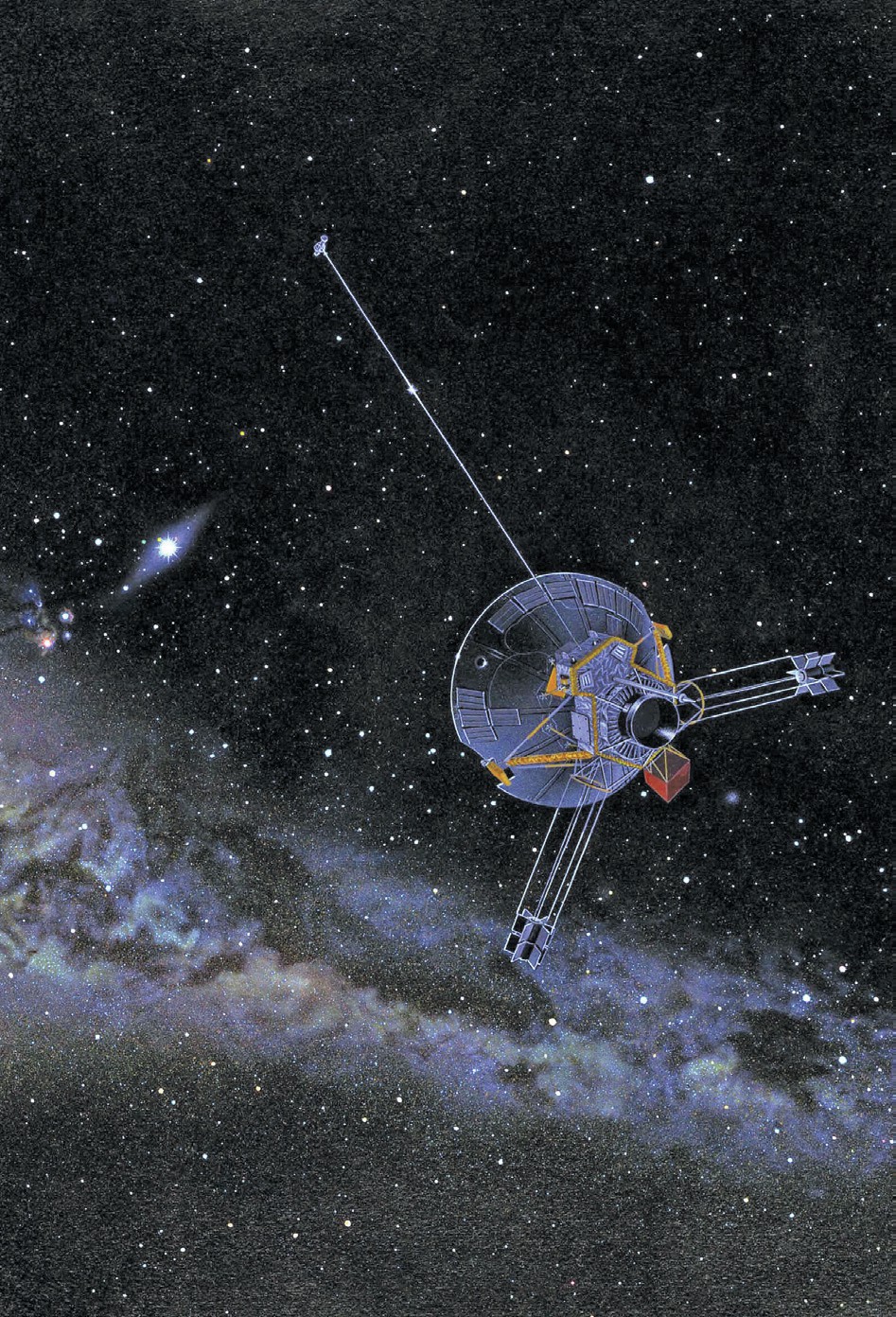
In 1972 and 1973 the Pioneer 10 and 11 spacecraft (Figure 1) were launched to explore Jupiter. When their mission was finished they were redirected to head out of the solar system and are now two of the most distant man-made objects from Earth.
On the side of each spacecraft is a plaque with a pictorial message (Figure 2), which includes a picture of a man and a woman. There is also a diagram showing the spin transition of hydrogen, where the ‘flipping’ of the electron involves emission or absorption of radiation with a wavelength of 21 cm. As you can read on pages 2–6 the 21 cm hydrogen ‘line’ is very important in astronomy, so if there is any sufficiently developed and intelligent life elsewhere in the Universe, it is highly likely that they would have observed this 21 cm radiation because hydrogen is the most abundant element. Next to the drawing of the man and woman is the number 8 in binary code. This is meant to convey the information that humans are roughly 8 × 21 cm tall (about 168 cm).
Your organisation does not have access to this article.
Sign up today to give your students the edge they need to achieve their best grades with subject expertise
Subscribe




